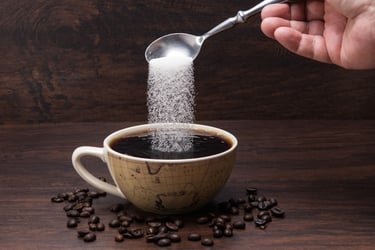eStoreRx™
Online Supplement Dispensary
eStoreRx™ is an easy direct-to-patient ordering & fulfilment program for lifelong wellness.
For over 40 years, Biotics Research Corporation has revolutionized the nutritional supplement industry by utilizing “The Best of Science and Nature”. Combining nature’s principles with scientific ingenuity, our products magnify the nutritional
eStoreRx™ is an easy direct-to-patient ordering & fulfilment program for lifelong wellness.
Biotics Research is proud to expand our commitment to education with the Wellness Unfiltered Pro Podcast. Each episode delves into key health topics and the clinical applications of our premier products. Through candid, insightful conversations, our team offers practical guidance to keep you informed and empowered as a healthcare professional.
January 08 2026
Research on ketogenic diets – a.k.a. ketogenic metabolic therapy (KMT) – is expanded across a range of applications. Research on the efficacy of any d...
 A new paper published in the journal Nature has shown that the gut-to-brain activity of sweetness is specific to sugar molecules, but not artificial sweeteners. The sugar sensing pathway that was discovered by Charles Zuker, and his team, at Howard Hughes Medical Institute provides insight into the neural basis for sugar preferencing. Zuker urges us to separate the concept of “sugar” and “sweetness.” Stating that "Sweet is liking, sugar is wanting,” because, contrary to previous research, sugar affects the brain in ways that artificial sweeteners doesn’t.
A new paper published in the journal Nature has shown that the gut-to-brain activity of sweetness is specific to sugar molecules, but not artificial sweeteners. The sugar sensing pathway that was discovered by Charles Zuker, and his team, at Howard Hughes Medical Institute provides insight into the neural basis for sugar preferencing. Zuker urges us to separate the concept of “sugar” and “sweetness.” Stating that "Sweet is liking, sugar is wanting,” because, contrary to previous research, sugar affects the brain in ways that artificial sweeteners doesn’t.
Both animals and humans love sugar, as it triggers the brain’s reward system. Previously Zuker’s studies found that sugar and artificial sweeteners trigger the same taste-sensing mechanism. This recent study questioned these findings by testing the difference between sugar and the artificial sweetener Acesulfame K (often used in diet soda). Using mouse models Zuker and his team offered sugar water and water with sweetener. Interestingly, at first the mice had no preference, but after two days they switched to exclusively drinking the sugar water.
To analyze why the mice had a preference for the sugar water, Zucker and his team analyzed their brain activity. They discovered the brain region that lights up when the mice consumed the sugar water. It was the the caudal nucleus of the solitary tract (cNST) which is located in the brain stem. And separate from the taste-sensing mechanisms. Zucker and his team traced the glucose-sensing pathway back to the gut and then through the vagus nerve to the brain. This pathway prefers glucose, ignoring artificial sweeteners and fructose. This pathway could have developed because glucose is a source of fuel for all life forms.
Zucker and his team are now looking at other systems and how they relate to the gut-to-brain sugar sensing pathway. He wants to identify ways to “help curtail our insatiable appetite for sugar."
Related Biotics Research Products:
Submit this form and you'll receive our latest news and updates.
*These statements have not been evaluated by the Food and Drug Administration. This product has not intended to diagnose, treat, cure, or prevent any disease.
Proposition 65 Warning
© 2025 Biotics Research Corporation - All Rights Reserved
Submit your comment